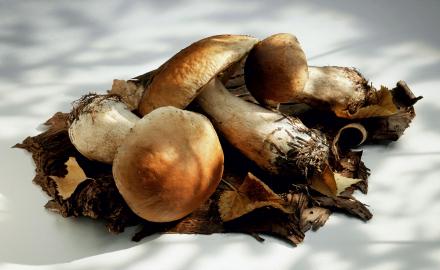Oils
The aromatic palette of “yellow gold”
The olive tree produces hundreds of varieties of olive, which have been pressed to make oil since 3500 BC. In antiquity, olive oil was used for its culinary, medicinal and cosmetic properties.
Today, olive oil is mainly produced in Spain, but also in Italy, Greece and Tunisia.
The aromatic intensity of olive oil varies according to the soil and the maturity of the harvest.
Like wine, olive oil should be savoured. There are great vintages of “yellow gold”: exceptional, rare and pure oils. Tasting establishes the intensity of the bitterness, the fruit (which can be ripe, green or black), the potency (the spicy sensation) and the smoothness. Olive oil has an astonishing array of recognisable flavours: green apples, sweet almonds, white flowers, red fruit, fresh cucumber, green tomatoes, mushrooms...
Oils with a variety of flavours and uses.
Vegetable oils are extracted from seeds, fruits or cereals. Grinding them forms a paste which is then pressed hot or cold. The oil can then undergo different treatments and be refined, or remain pure if it is to be a virgin oil.
Peanut oil is ideal for frying. To season salads, we prefer the flavoursome canola or walnut oils. Grape seed oil is used mainly for marinades. Olive oil and sunflower oil are just as good for cooking as they are for dressings.
Oils can also be flavoured by adding herbs or spices, or scented like truffle oil.
Indeed, composite oils allow the properties of many oils to be brought together (like blends of sunflower, canola and grape seed oils, etc.), for healthy and tasty cooking.
Oil, a healthy food
Olive oil, which can be consumed raw or cooked, is high in mono-unsaturated fatty acids, in anti-oxidant polyphenols and in vitamins E and K. Olive oil can help to prevent cardiovascular diseases and lower cholesterol. Some health benefits have finally been recognised by the European Union.
Essential oils, for new flavours
A sign of trendy and creative cooking, essential oils flavour savoury or sweet recipes. Very concentrated, they replace fresh herbs, flowers, fruit, etc. They offer a natural alternative to artificial flavourings.
Essential oils promise exciting experiences: they have scents of beautiful depth and bring unprecedented flavours to recipes. So they are marvellous in stewed fruit or jam, they enhance fruit salads or vegetable purées, give power to a marinade...
We prefer essential oils from organic sources and adapted for use in food. We use them diluted in a thicker (oil, egg yolk, cake dough) or sweet substance, like honey. The amount should be precise down to the drop, for a perfectly balanced recipe. It is also important to respect the conditions of use: pregnant women, babies and young children should not consume essential oils.


